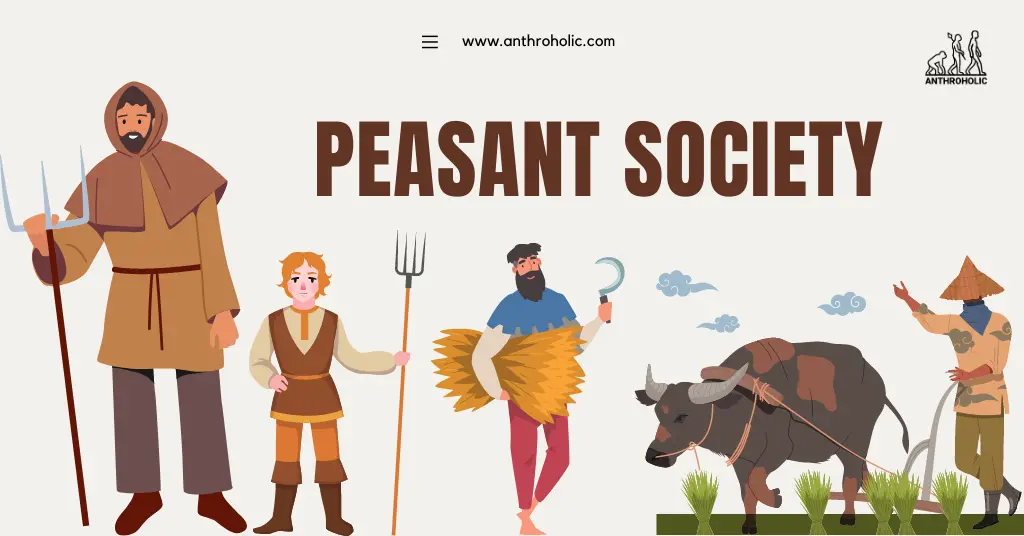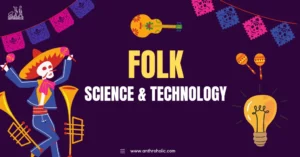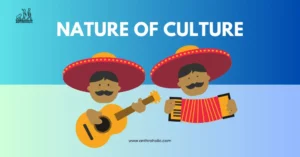AI Answer Evaluation Platform Live Now. Try Free Answer Evaluation Now
Peasant Society
Peasant society represent a category of agrarian societies where the major mode of subsistence depends on small-scale agriculture. While the label ‘peasant’ may bear historical and cultural connotations, researchers aim to elucidate the anthropological understanding of peasant societies, drawing on key studies and theories.

Defining Peasant Societies
Peasant societies can be characterized by several key aspects:
- Subsistence farming: The majority of the population is involved in small-scale farming for survival.
- Limited technology: Primitive farming tools and methods are often used.
- Social hierarchy: A feudal system is common, with landlords owning most lands and peasants working on them [1].
These societies have been prevalent throughout history, notably in pre-industrial Europe and Asia. However, they are not confined to the past, with some societies maintaining this structure today.
Theoretical Approaches to Peasant Societies
The Moral Economy
The ‘moral economy’ concept, introduced by anthropologist James C. Scott, posits that peasant societies operate on a system of mutual aid and shared responsibility, rather than competitive individualism. He argues that, while economic rationality is indeed a factor, these societies also value community wellbeing and social stability [2].
The Peasant Mode of Production
Anthropologist Eric R. Wolf conceptualized the ‘peasant mode of production’ to explain the economic structure of peasant societies. In this model, peasants’ work supports not only their own subsistence but also the upper classes via rent or taxation [3].
Peasant Society Structures
Social Hierarchy
In peasant societies, social hierarchy is often firmly entrenched. Typically, a landowning elite controls the resources, while peasants constitute the base of the society.
| Social Hierarchy in Peasant Society |
|---|
| 1. Landowning Elite |
| 2. Peasantry |
Economic Structure
Peasants primarily engage in subsistence farming, often subject to taxation or rental agreements. These rents, whether in the form of money or a portion of their produce, are given to the landowners.
| Economic Flow in Peasant Society |
|---|
| 1. Peasants produce crops |
| 2. Taxes/Rent given to landowners |
Cultural Practices
Peasant societies are often rooted in traditions. Religious and cultural festivals, folklore, and traditional crafts and music shape these societies’ identities.
Peasant Resistance and Rebellion
One of the most compelling aspects of peasant societies is their response to oppression and inequality. Many historical and contemporary peasant societies have exhibited instances of resistance or rebellion against exploitative systems. James C. Scott’s analysis of peasant resistance in “Weapons of the Weak” and “Domination and the Arts of Resistance” has emphasized the day-to-day forms of resistance that often go unnoticed. He argues that these forms of resistance, including foot-dragging, non-compliance, and gossip, are essential survival mechanisms.
Role of Women in Peasant Societies
Women in peasant societies play a crucial role that goes beyond the realm of household chores. They contribute significantly to agricultural labor, food processing, and preparation. In addition, they also take part in marketing and selling the agricultural products, a role that is often overlooked. Gender dynamics within these societies, as Boserup pointed out, can be quite complex and interwoven with their economic, social, and cultural fabric.
| Role of Women in Peasant Society |
|---|
| 1. Agricultural Labor |
| 2. Food Processing and Preparation |
| 3. Marketing and Selling of Agricultural Products |
Health and Nutrition in Peasant Societies
Health and nutrition in peasant societies depend heavily on local environmental resources and farming practices. Often, diet is monotonous, relying heavily on staple crops, leading to nutritional deficiencies. However, some societies have mitigated this through diversified farming and the inclusion of nutrient-rich crops.
Modern Perspectives on Peasant Societies
Persistence and Transformation
While industrialization and globalization have disrupted traditional peasant societies, some have proven resilient. Often, they adapt to the changing economic environment by integrating commercial crops into their farming or seeking non-agricultural work [4].
Peasants in Global Economy
Peasant societies are not isolated from the global economy. Despite challenges like marginalization and poverty, they contribute significantly to global food security. Their practices, such as agroecology, have potential for sustainable development and climate change mitigation.
Conclusion
Peasant societies, steeped in tradition and resilience, remain an essential part of our global socioeconomic fabric. Anthropologists continue to unravel the complexity of these societies and their place in a rapidly changing world. Further research can deepen our understanding and inspire policies to support and sustain these communities.
References
[1] Chayanov, A. V. (1986). The Theory of Peasant Economy. University of Wisconsin Press.
[2] Scott, J. C. (1976). The Moral Economy of the Peasant: Rebellion and Subsistence in Southeast Asia. Yale University Press.
[3] Wolf, E. R. (1966). Peasants. Prentice-Hall.
[4] Bryceson, D. F. (1996). Deagrarianization and Rural Employment in Sub-Saharan Africa: A Sectoral Perspective. World Development, 24(1), 97-111.




